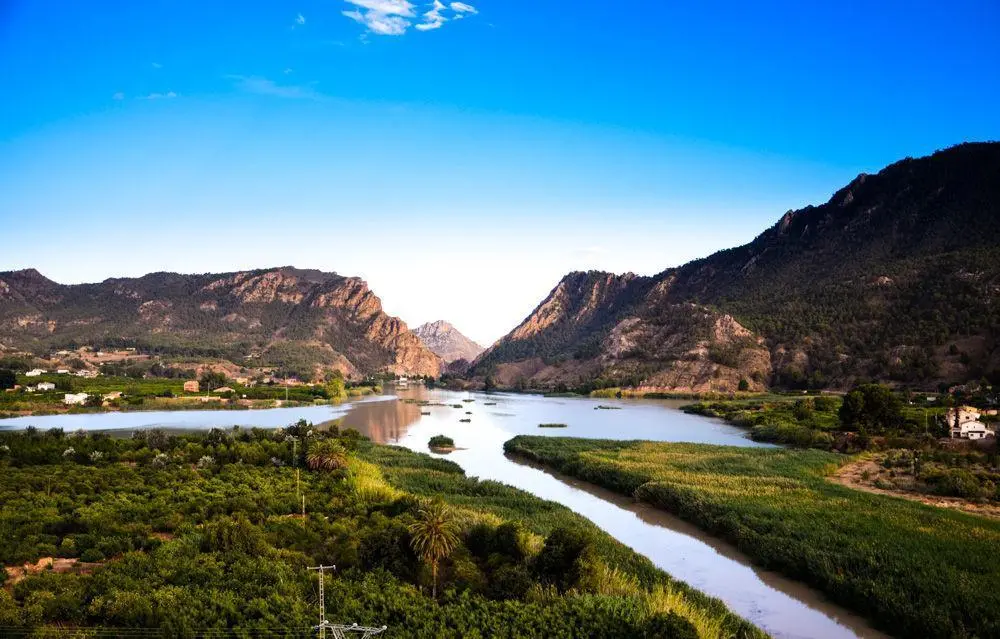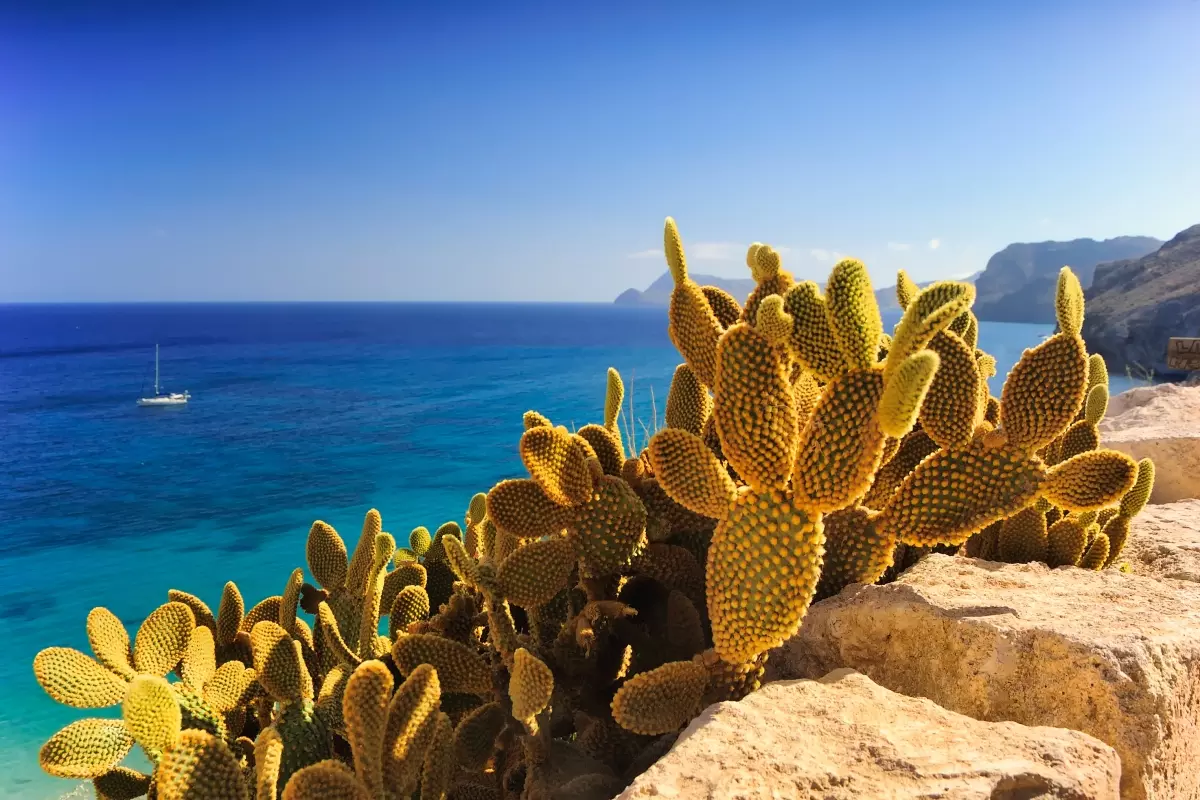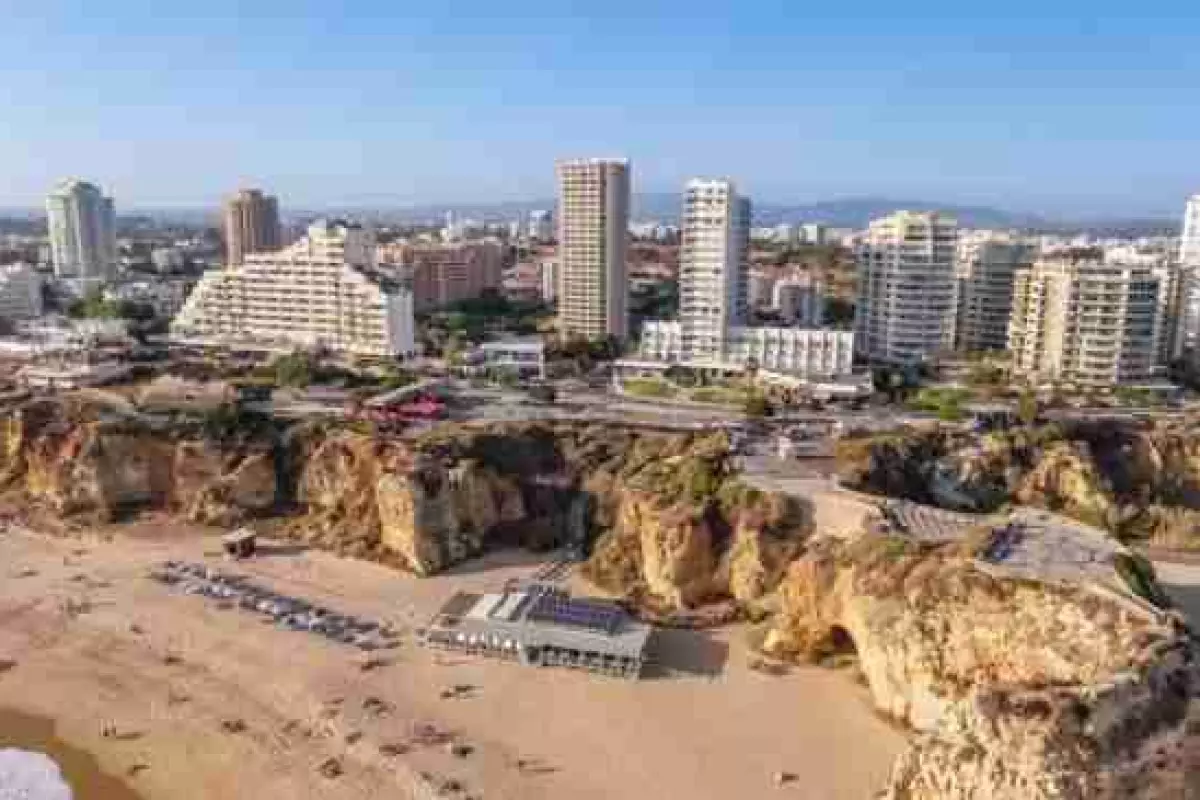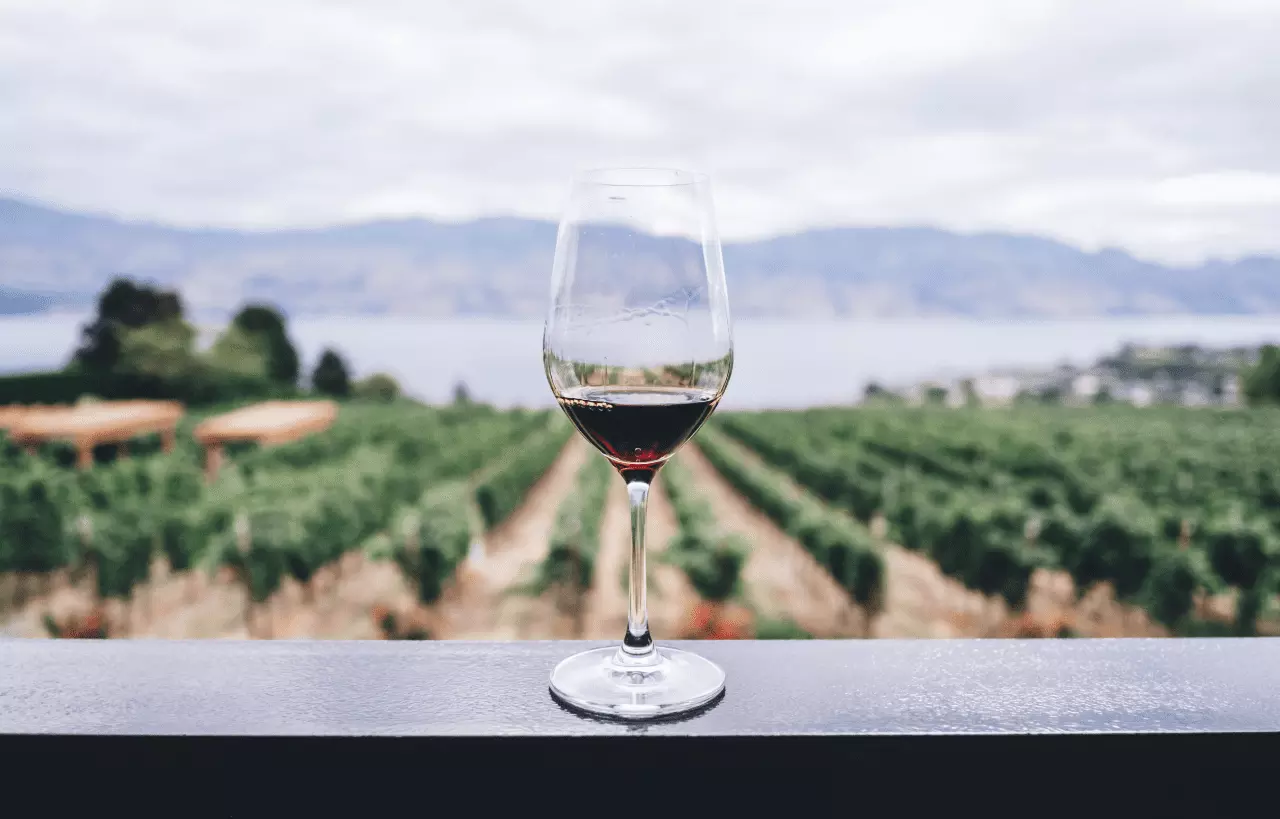We suggest renting one of our Campervans and getting lost in the marvelous Ricote Valley (Murcia). Also known as the Moorish Valley because it was the last stronghold of the Arabs in Spain, the Segura River turns it into an almost unknown oasis, creating a fertile landscape of fruit trees and palm groves in its orchard.
The campervan route through Murcia's orchard
The route we propose is a short one, only 75.3 km (just over two hours of driving) one way and 54 km (45 minutes) return: perfect for a two or three-day getaway.
Starting the journey from Murcia, we recommend beginning in the town of Alcantarilla, heading north, following the Segura River, crossing the Murcian orchard, immersing ourselves in the beautiful Valley, and ending our tour in Cieza.
Google map of the trip:
Let's begin...
Visiting Alcantarilla with your campervan
Alcantarilla offers the contrast of a city that is heavily industrialized yet deeply in love with its traditions. With Roman, Arab, and Christian influences, Alcantarilla is a cultural melting pot where the mix of different peoples who have inhabited it still resonates today, even after centuries.
The medieval settlement was established on the path to La Ñora. One of the river Segura's floods forced the community to change its original location and move to a higher area.
Today, Alcantarilla is an open city with a strong presence of industries, as evidenced by its sharing of Spain's largest industrial park with the capital.
Visitors to this city can enjoy a visit to the Ethnological Museum of Murcia's Orchard, which is integrated into the environment formed by the Alquibla, Daba, and Turbedal irrigation channels. The museum's grounds display traditional clothing, utensils, ceramics, and various agricultural objects in several rooms. It also exhibits the hydrology of the irrigation channels, the vegetable gardens, huts, and, finally, the waterwheel. The original wheel, dating from the 15th century, was used to irrigate fields through an aqueduct. The current one, from the 19th century, is declared a Historic-Artistic Monument and measures 11 meters in diameter, 1.90 meters wide, and 8 meters in height from the water's surface.
Facing this setting that echoes of old customs and traditions, you'll find the hermitage of the Virgin of Health, the patron saint of the town. Another point of interest is the House of Las Cayitas, a stately mansion built in the late 17th century, which housed the regional Inquisition court for decades. The churches of San Roque and Nuestra Señora de la Asunción are also worth a visit.
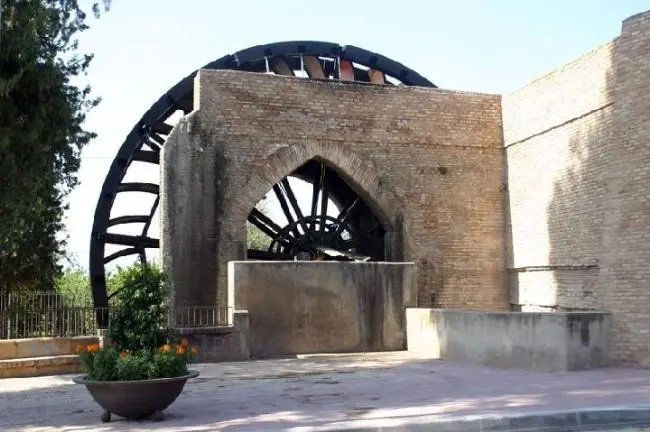
IMAGEN NORIA
Next to Alcantarilla, you can visit the Noria de la Ñora, one of the historical and most representative waterwheels in the traditional irrigation of Murcia's Orchard. The waterwheel is part of a 220-meter-long aqueduct, which, in some areas, reaches a height of 9 meters and is mostly made of solid brick. It serves to distribute water to the adjacent gardens. The waterwheel was declared a Cultural Heritage Site (BIC) on July 30, 1982.
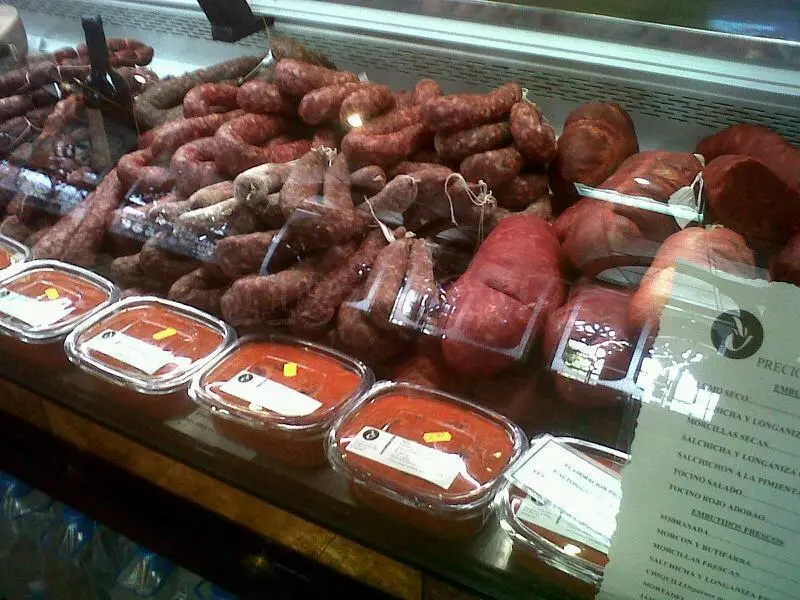
IMAGEN PERETON
After visiting Alcantarilla, what better than having a traditional Murcian meal at the well-known 'Venta el Pereton.' Here, you can also stock up on supplies for the route: they have delicious typical sausages, bread, sweets, and more to make you feel like a true traveler.
Campervan journey through the Murcia Orchard: Las Torres de Cotillas, Ceutí, and Lorquí
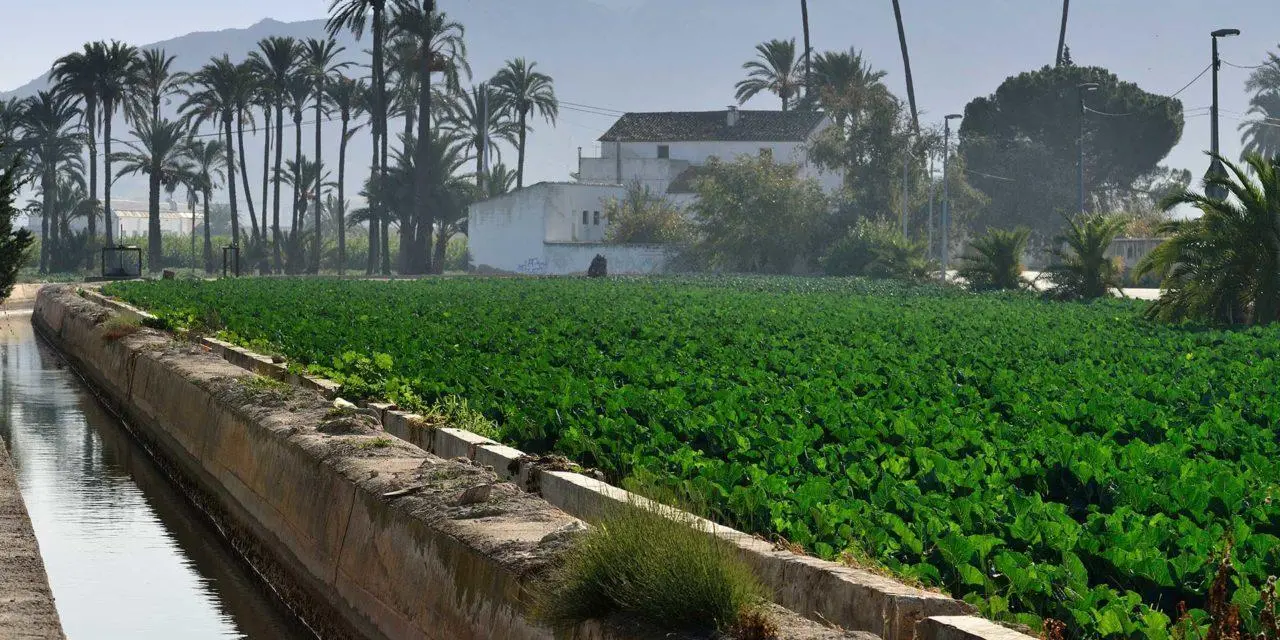
IMAGEN HUERTA MURCIA
The town of Las Torres de Cotillas is located in the heart of Murcia's Orchard, just 15 km from the capital. The town's history can be traced back to Roman times when a 1st-century Roman bath complex was discovered in the La Loma district. Its name comes from the Visigothic era when it was called "Quitiyya."
Continuing on the same road north, we reach the towns of Ceutí and Lorquí.
Ceutí is part of the Vega Media del Segura region. It is currently one of the most dynamic municipalities in the region on all fronts. Factors contributing to this include economic diversity as a driver of development. Ceutí has also made a significant investment in culture, with the creation of the Contemporary Art Center La Conservera, an outdoor sculpture and mural museum, the Antonio Campillo Museum, which exhibits sculptures and drawings donated by this Murcian artist, and the 7 Chimeneas museum.
Other points of interest include the Churches of Santa María Magdalena, with beautiful sculptures, including one of Saint Mary Magdalene, one of Saint Roque, and, most notably, the Christ of the Dead, attributed to an artist from the Francisco Salzillo school. Also of great interest is the Arab Wall, discovered in early 2002, a mudbrick wall that was part of the entrance to the farmhouse a thousand years ago. In 2003, this place was conditioned as a historical site for visits by residents and tourists.
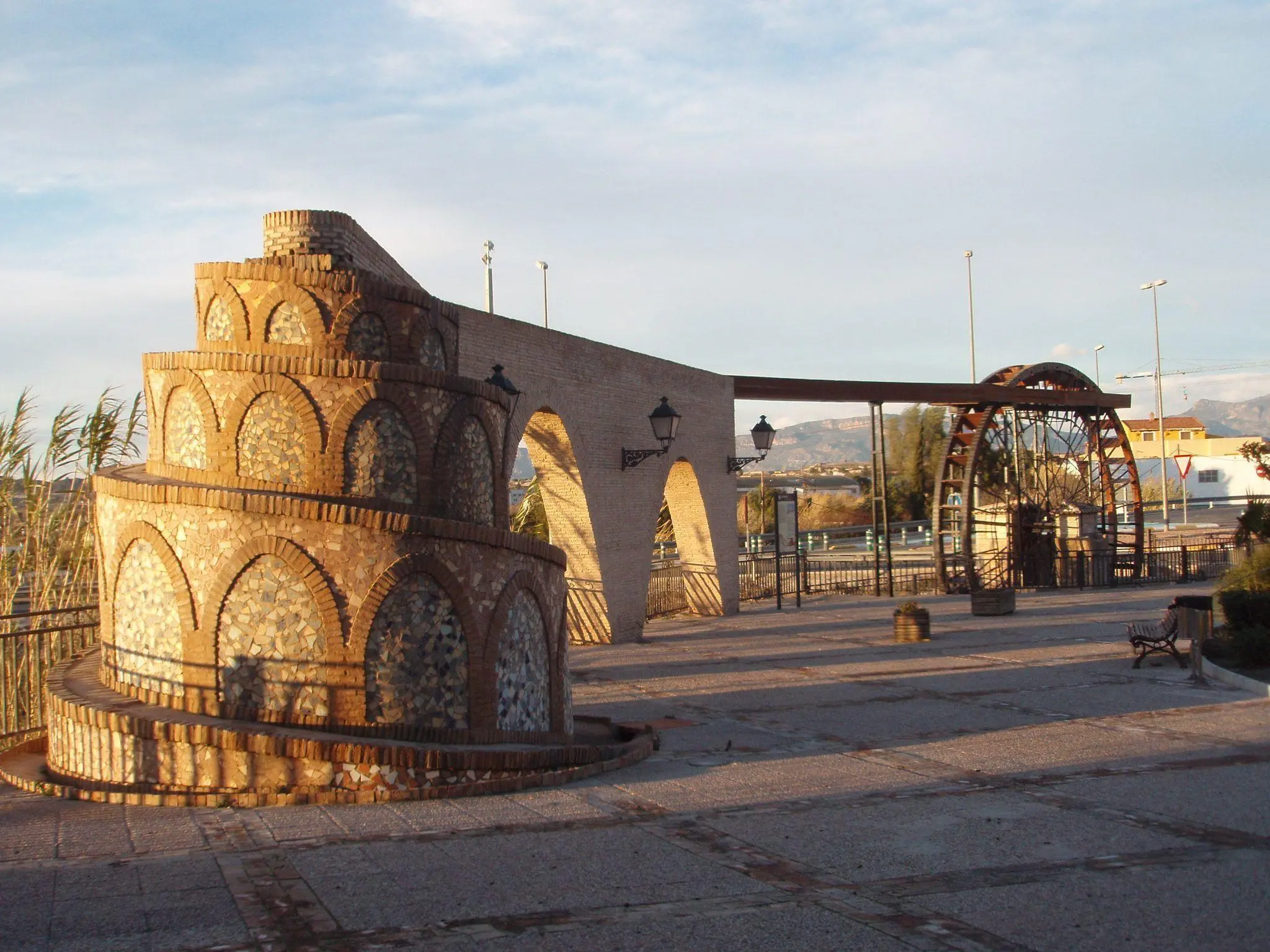
IMAGEN LORQUI
In Lorquí, the Segura River winds through reed beds, providing greenery to the extensive orchards and contrasting with the white hills nearby. Situated on a hill from which the entire valley can be seen, the urban center consists of narrow streets with Moorish layouts.
Tourists visiting this town should make a stop at the parish church of Santiago Apóstol, built by Gilabert in the 18th century. Inside, there is a repoussé silver chalice from the 18th century and a sculpture of Saint Joseph attributed to Salzillo. Another must-visit is the Rapao waterwheel, built in the 18th century. Declared a National Artistic Monument, it is quite large, as it was constructed to irrigate more than three hundred 'tahúllas' (a historical measure of land). Its iron structure features 112 buckets and 156 blades.
Archena and Its Magnificent Spa: An Ideal Place to Stay with Your Campervan
Nestled along the Segura River, Archena is a fertile town that opens up to the Ricote Valley. It's an oasis in our region where the rugged neighboring mountains are covered in greenery.
Its history dates back to the Iberians, whose artifacts, such as the Warrior's Vase, can be found, now housed in the National Archaeological Museum. Many historians trace its origins back to 234 BC under Carthaginian rule, but the true nucleus of the town, along with its name, is rooted in Roman times. After the Reconquista, Archena came under the dominion of the Order of Saint John the Baptist, a status that lasted until the 19th century. Evidence of this can be seen in the baroque church dedicated to this saint.
This town has a free motorhome area right next to the Segura River, equipped with all the necessary facilities for filling and emptying.
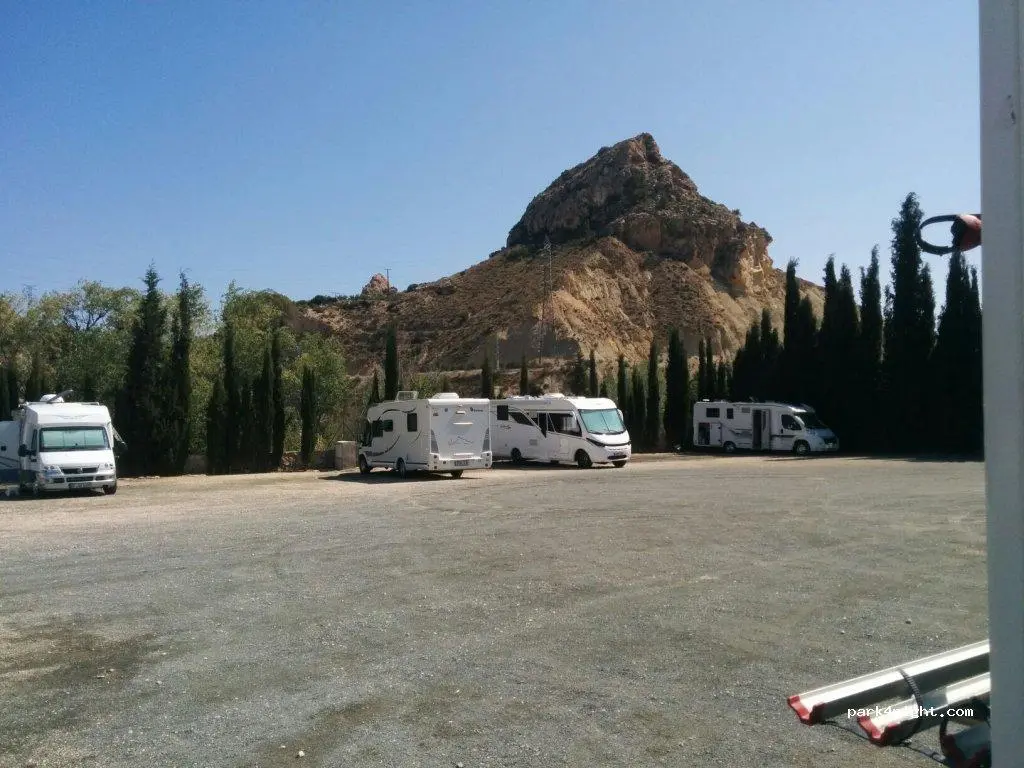
IMAGEN AREA
The beauty of Archena is complemented by the quality of its thermal baths, known since Roman times. Its healing waters, with significant curative properties, flow at a temperature of 50°C. Located in the Sanctuary of the Virgin of Health, the patron saint of Archena, the spa is one of the town's most important tourist attractions.
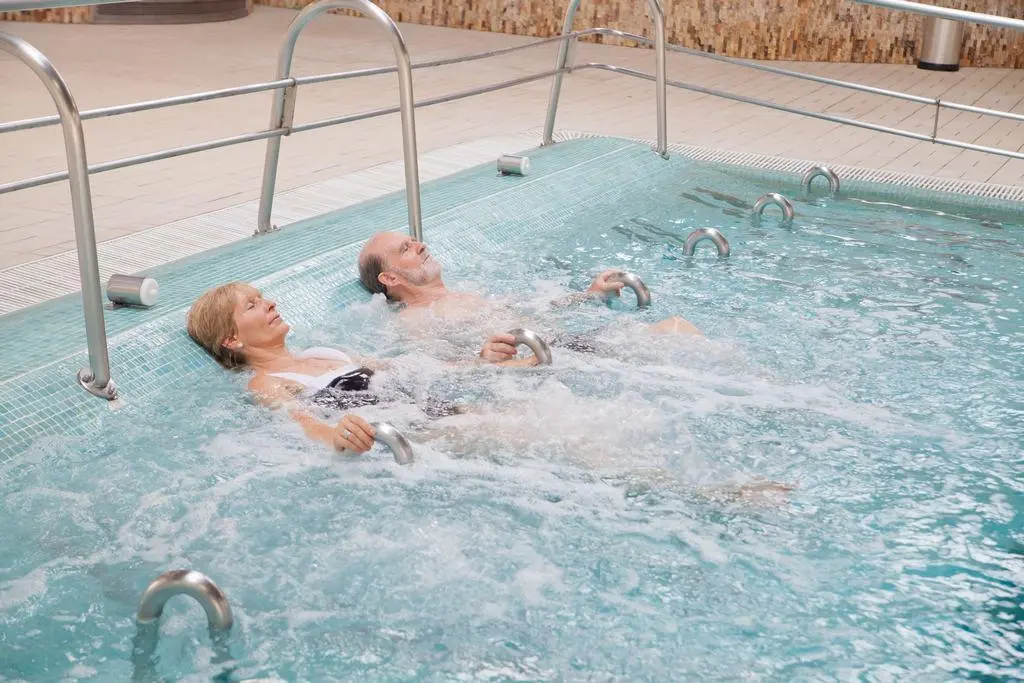
IMAGEN BALNEARIO
The Archena spa complex includes three hotels: Hotel Termas, Hotel Levante, and Hotel León.
The complex is open year-round and, importantly for campervan travelers, has dedicated parking. Upon arrival, you can call the number indicated by a sign, and they will quickly come to open the barrier and let you park. It's very close to the entrance and is very convenient for visiting the spa. While overnight parking is not allowed, it's very close to the town's motorhome area. To access the parking lot, you have to enter from the back of the spa, and you can find its location on the route map.
The Ricote Valley in a Rental Campervan: Villanueva del Rio Segura, Ulea, and Ricote
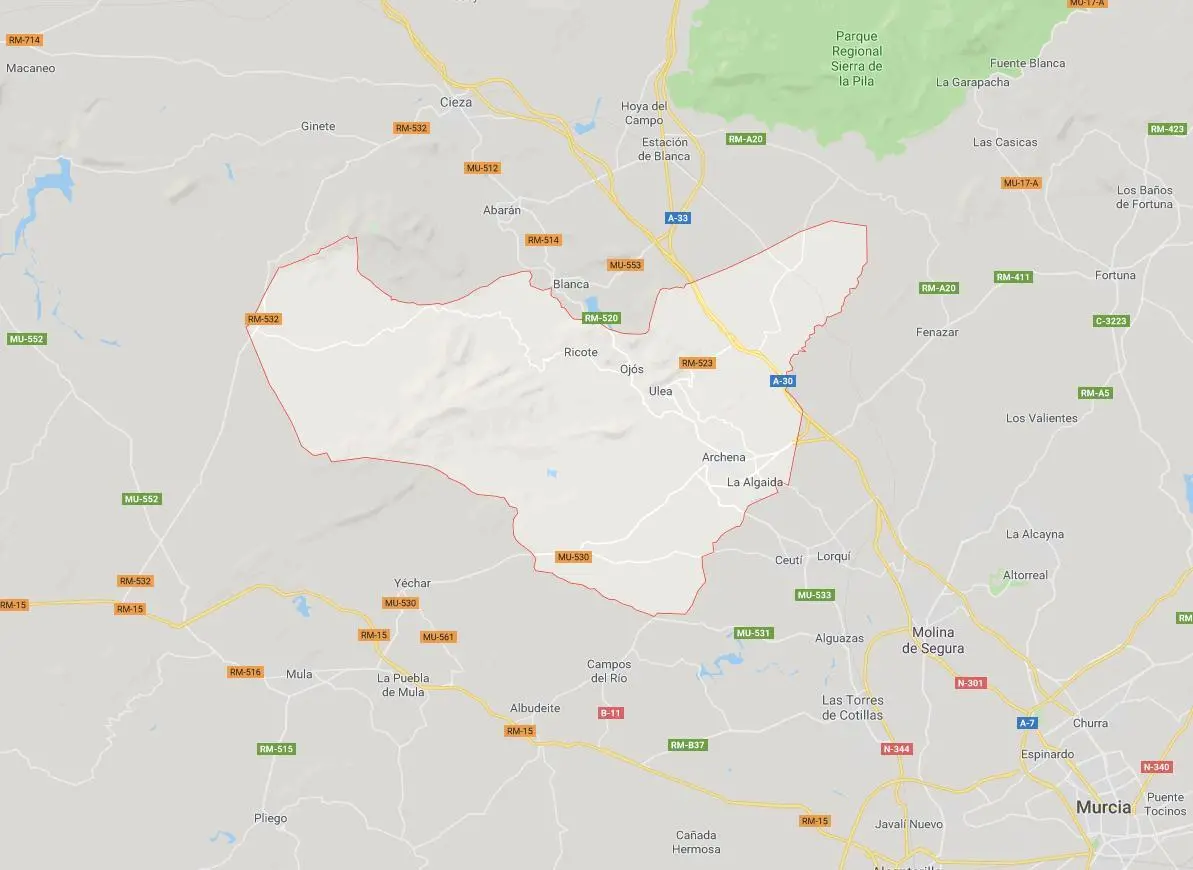
MAPA VALLE RICOTE
Leaving Archena to the south, we enter the Ricote Valley (the central destination of this route). This valley, also known as the Moorish Valley, is a historical region in the Region of Murcia, Spain, located in the north of the region and in the middle basin of the Segura River.

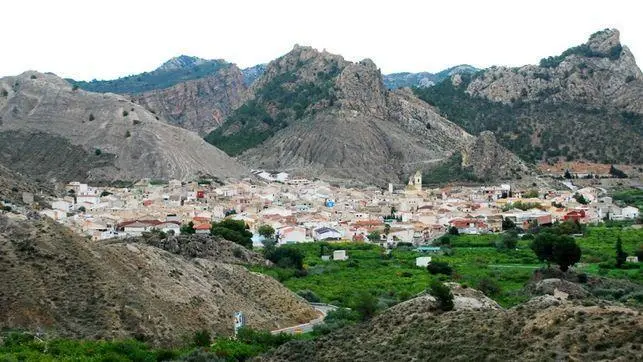
IMAGEN VALLE RICOTE
If there's one place where you can still feel the sensitivity of Arab culture, it's the Ricote Valley. The towns that make up this region create a lush orchard, winding along the riverbanks bathed by the Segura River, transporting us to an idyllic world. A fertile meadow anchored in its Arab heritage, as evidenced by its irrigation systems and numerous vestiges. The river's gentle flow takes us from grove to grove, through meanders lined with poplars and willows, concealing behind them a sea of fruits, vegetables, and greens.
From this area, the landscape changes as we enter a wider zone known for its scenic contrasts, making it particularly attractive for activities like hiking, mountain biking, or climbing. It also offers outdoor activities like rafting on the Segura River or the opportunity to enjoy horseback riding at equestrian centers.
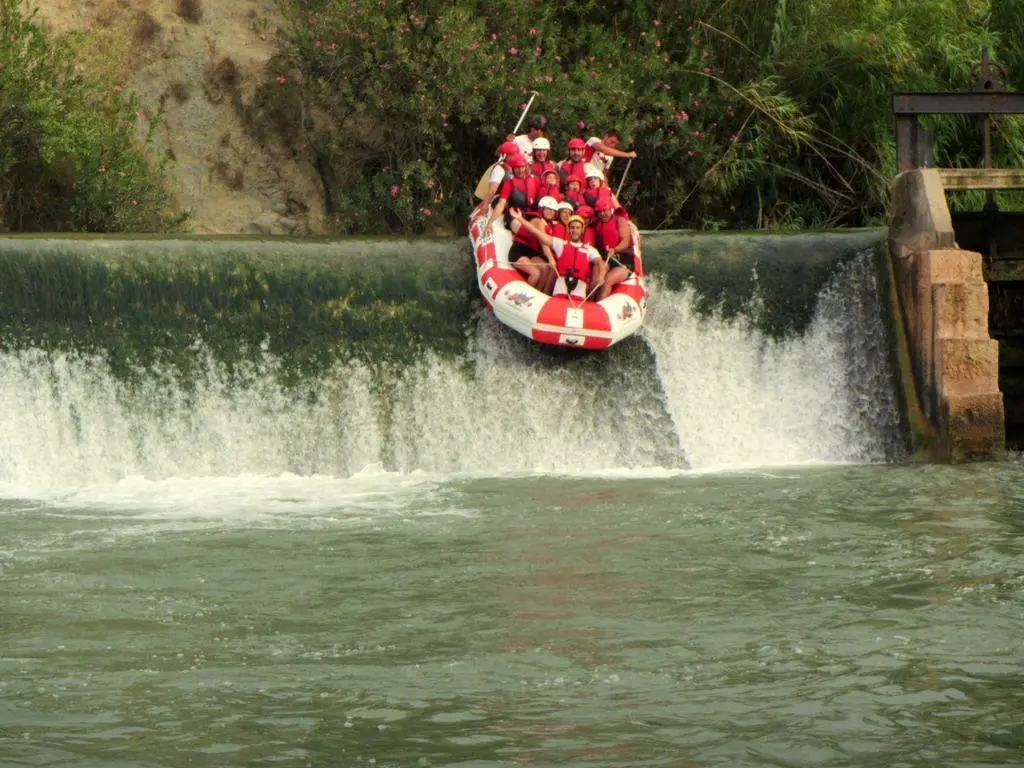
IMAGEN RAFTING
Between Archena and Ulea, you'll find the agricultural town of Villanueva del Rio Segura, where fruit trees are the main economic activity. Its history dates back to the 4th century BC when the Romans settled on its lands. Villanueva brings back the scent of the valley in every one of its streets, the taste of water in its summer baths, and the charm of the Ricote Valley.
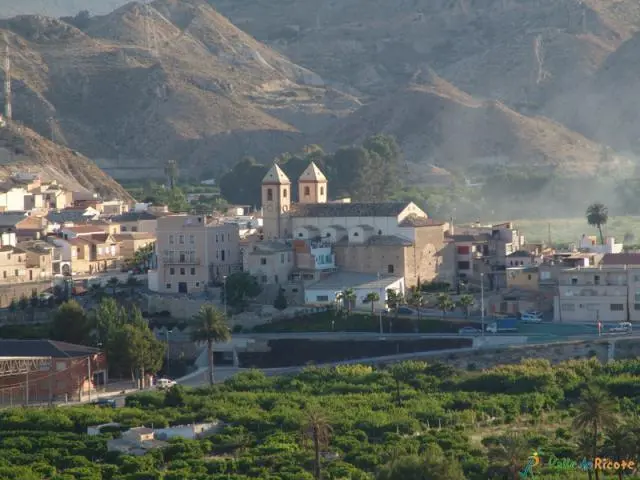
IMAGEN VILLANUEVA DEL SEGURA
In Ulea, we reach a land of contrasts, where the greenery of the Ricote Valley blends with the dry landscapes of the neighboring mountains. Its narrow, terraced streets, the sound of water through fountains, cisterns, and waterwheels, the peaceful and calm way of life, all showcase the town's Moorish heritage that extends throughout the valley. Iberians and Romans settled in these lands, but it was under Muslim rule that the town's current image was shaped. Like its neighbors, after the Reconquista, it belonged to the Order of Santiago, until the mid-19th century.
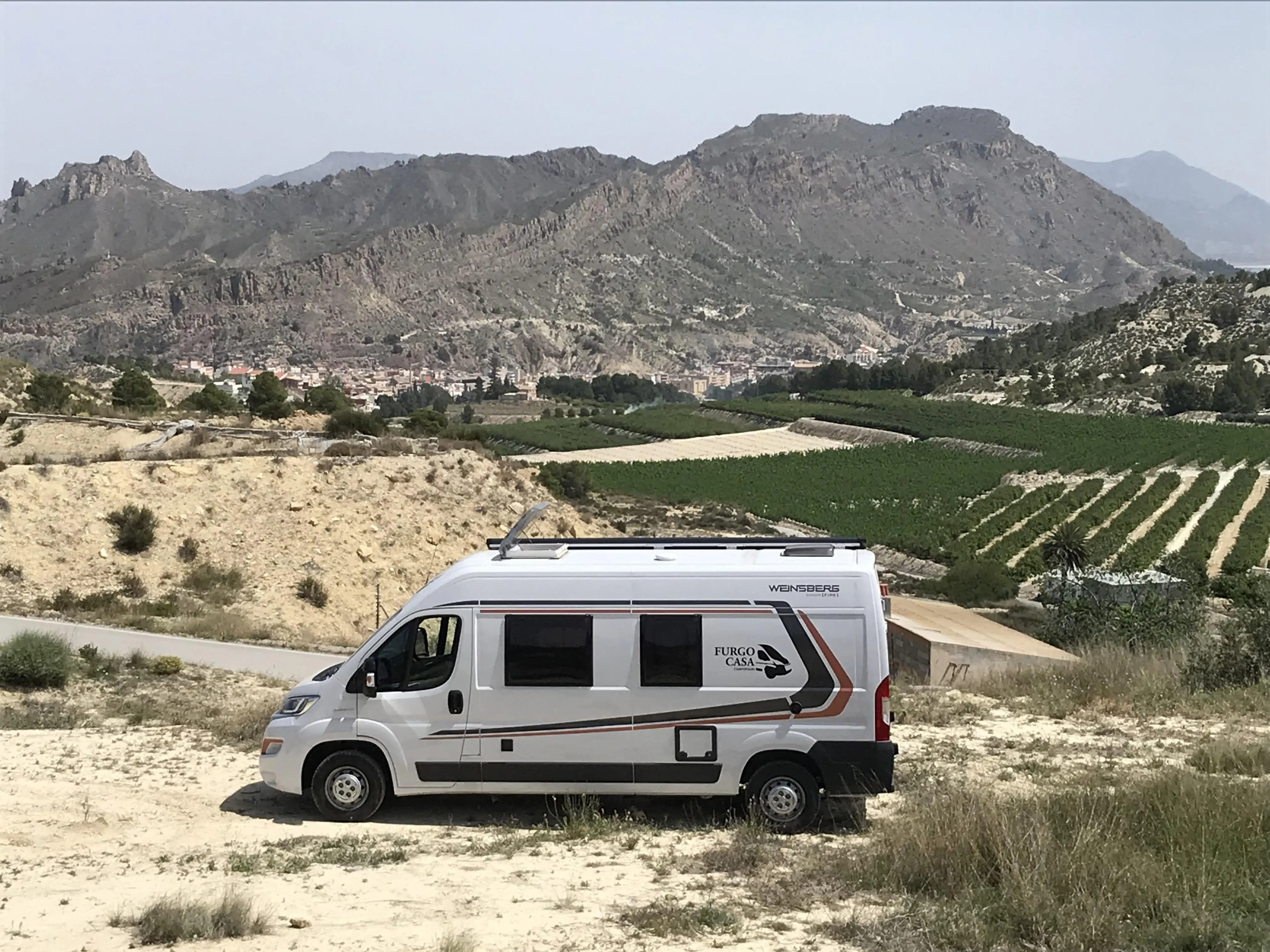
IMAGEN CAMPER
Next, the town of Ricote, once a dominant fortress, is now peaceful, nestled between the orchard and the limestone of its sierra. Ricote still maintains a rich gastronomic tradition, with local wine taking center stage. With the sweet taste lingering on your palate, the town reveals the charm of its stately houses, the Church of San Sebastián, which houses remarkable works, including its valuable restored organ. Also of great interest is the Casa Grande or House of Llamas, a pure Murcian baroque building with remarkable wrought ironwork.
From the town of Ricote, you have a double option. You can either return and find the Segura River, heading to the town of Blanca, and from there go north to Abarán and end in Cieza. Alternatively, you can continue on the "RM-B15" road, venture into the mountains until you reach the "RM-532," and then head towards Cieza (to later visit Abarán in the opposite direction). For nature lovers, this option is more appealing as you can find a quiet and secluded spot to stop and/or stay overnight and enjoy the beauty of the surrounding mountains.
Abarán and the Waterwheel Route in a Campervan
In Abarán, on both sides of the Segura River, you'll find the largest collection of traditional waterwheels in the Region of Murcia, whose main promoters were the Arabs who settled in the region. These waterwheels are still used to irrigate small orchards and fruit trees. These waterwheels are supplied with water from two ditches - Charrara and Principal - which take water from the Segura River upstream, in the Menjú area.

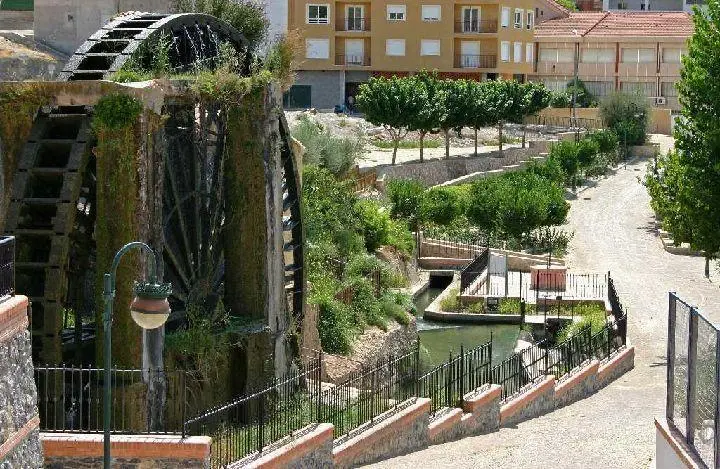
IMAGEN ABARAN
The pedestrian route connecting the waterwheels, slightly more than a kilometer long, runs through a fluvial and ethnographic landscape of value in the Ricote Valley, allowing you to explore the "hota de Don Garcia," "Grande," "de Candelón," and "de la Norica" waterwheels.
Cieza in a Campervan
The last town to visit on the route is Cieza. At every street, path, garden, or mountain, Cieza showcases its beauty, reviving the culture of the senses for travelers. It's renowned for its Paleolithic and Neolithic archaeological sites, unique in the Mediterranean region, and declared a UNESCO World Heritage Site.
Near this municipality lies one of the most beautiful natural areas created by the Segura River, the Almadenes Canyon, where the river narrows, forming walls hundreds of meters high, ideal for adventure sports. Thus, Cieza offers not only a chance to enjoy culture but also to savor the thrills of nature.
Visiting this town in spring is especially recommended because you'll discover the surprising phenomenon of the Blossom, in beautiful peach tree landscapes.

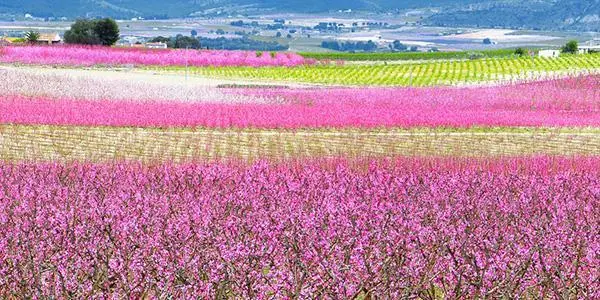
IMAGEN FLORACION
In Cieza, both the Iberians and the Muslims left their legacy, especially in the archaeological site of Medina Siyasa. The Siyasa Museum contains a full-scale reproduction of houses 6 and 10 from the Siyasa site. It also features traces of rock art from the Paleolithic to the Bronze Age.
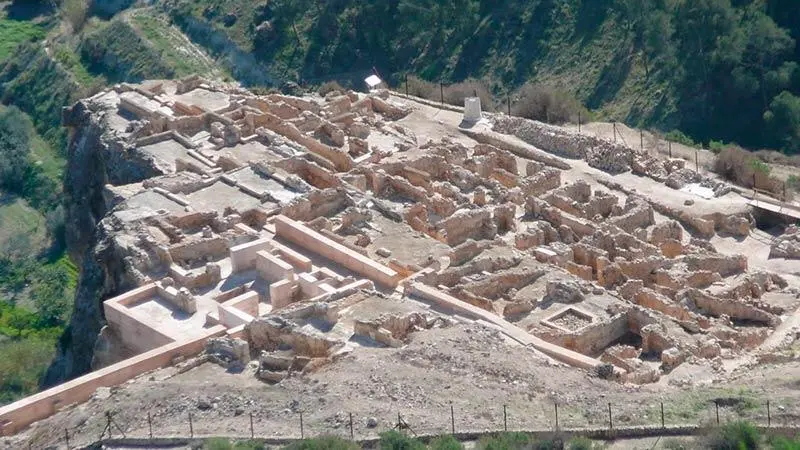
IMAGEN MEDINA SIYAS
Notable sights also include the Church of the Assumption, from the 18th century; the Church of San Joaquín, built in the 17th century; the Convent Church of the Clares, from the 18th century; the Chapel of Santo Cristo del Consuelo, in neo-Gothic-Mudéjar style; and finally, the Chapel of Buen Suceso. Its artistic heritage is completed by the Balcón del Muro, a historical complex that includes the old fortress from the 15th century and the 19th-century wall.
Finally, as the route comes to an end, it's time to return to Murcia. In this case, you'll take the A-30.
Another option (which we highly recommend) before returning is to continue from Cieza towards Calasparra and explore for several more days following our other route, "Camper through the Sierra de Jaén, a natural jewel of the Iberian Peninsula." Combining these two routes will provide an unforgettable experience, allowing you to discover one of the most beautiful areas in southeastern Spain.
We hope to have sparked your interest in visiting this beautiful region.
El equipo de FURGOCASA
FURGOCASA
¿Te apetece alquilar una autocarvana Campervan en Murcia?
Consulta nuestras tarifas y condiciones.
Te esperamos!!
 Inglés
Inglés  Español
Español 
